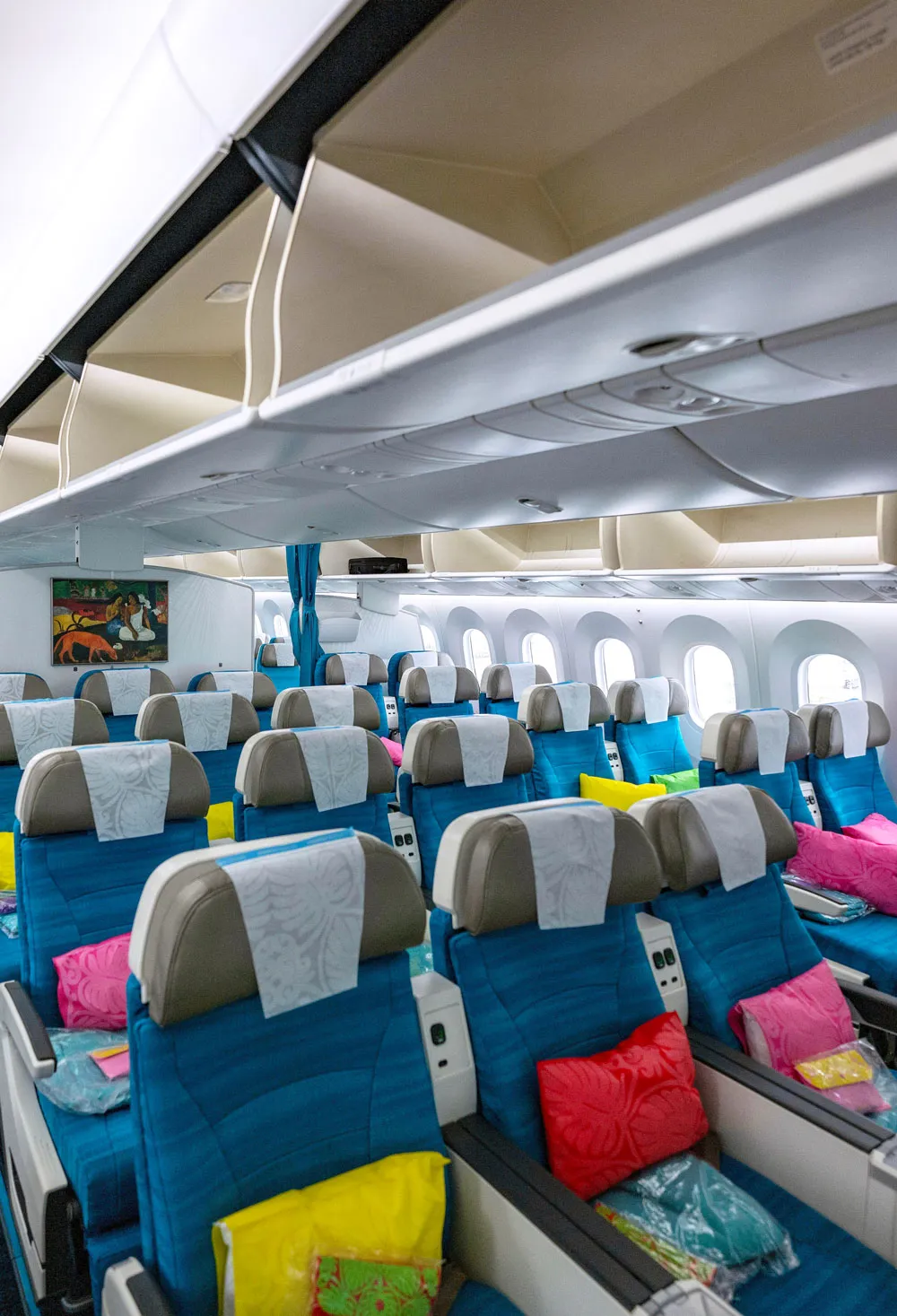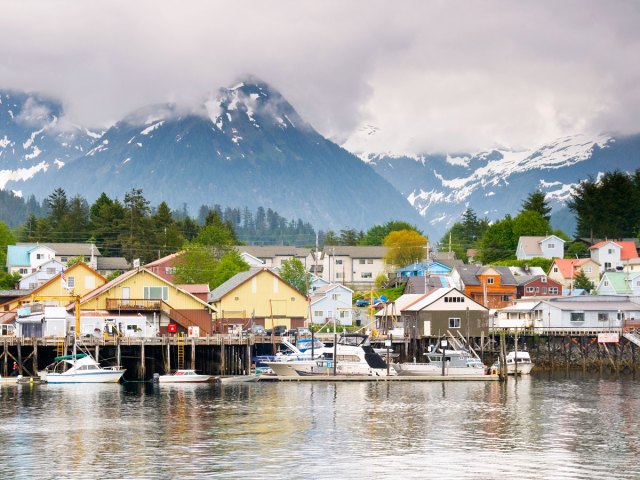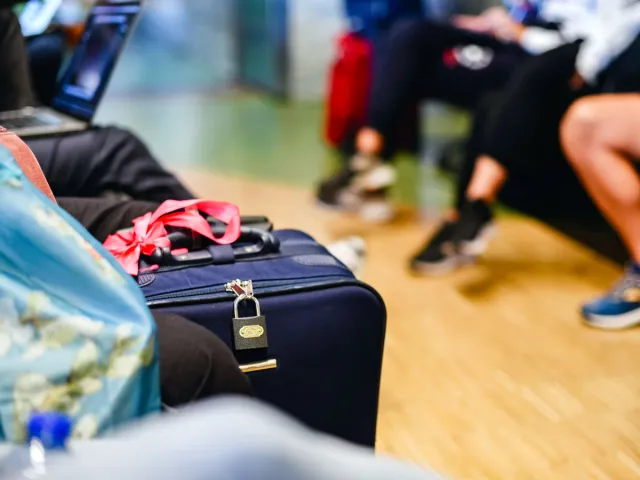From basic economy to premium economy and airline-specific classes like Delta One and United Polaris, airline terminology can be confusing. Sometimes, what’s called “first class” is actually a lesser experience than what you’d find in “business class” on a longer flight. Confused yet? If you’re looking to splurge on your next flight, here’s a primer on the key differences between first and business class on airlines around the world.
Domestic and Short-Haul Flights
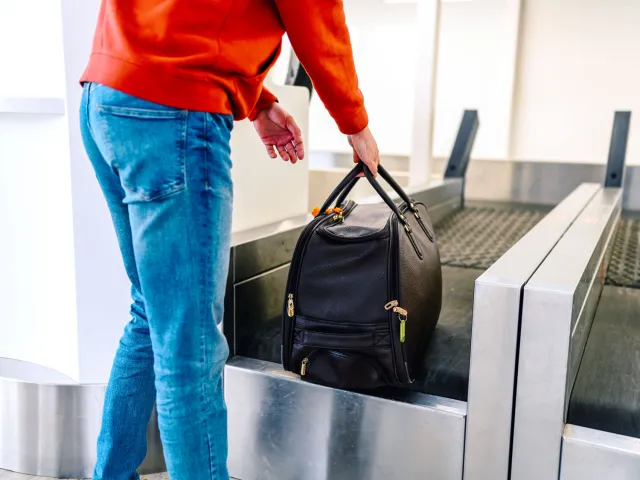
On domestic flights, most U.S. airlines offer two cabins of service: first class and economy class (often called “main cabin”). Within the main cabin, you may also be able to purchase a preferred or extra-legroom seat, but you’ll still receive economy-class service.
First class, on the other hand, is a noticeable step up in terms of amenities and service. Expect wider, plusher seats at the front of the plane, a few extra inches of legroom, and personalized service from a dedicated flight attendant. Snacks and drinks (including alcohol) are served free, and hot meals are offered on longer flights. Booking a first-class ticket also comes with extra perks such as priority boarding, free checked bags, and extra frequent flyer miles — though, notably, usually not airport lounge access when flying domestically.
In most other parts of the world, airlines that operate with a similar two-cabin model for short-haul flights market the forward cabin as “business class” instead of “first class.” Essentially, short-haul and domestic business class abroad is similar to the product U.S. airlines offer, only with a different name.
Europe is an interesting case. When flying intra-Europe in business class, you won’t find much (if any) difference in the seats or legroom. This is because most European airlines outfit the entire airplane with standard economy-class seats, but they will block off the middle seat for business class passengers at the front of the cabin to provide extra space. This allows airlines to easily adjust the size of the business-class cabin based on demand.
International Flights
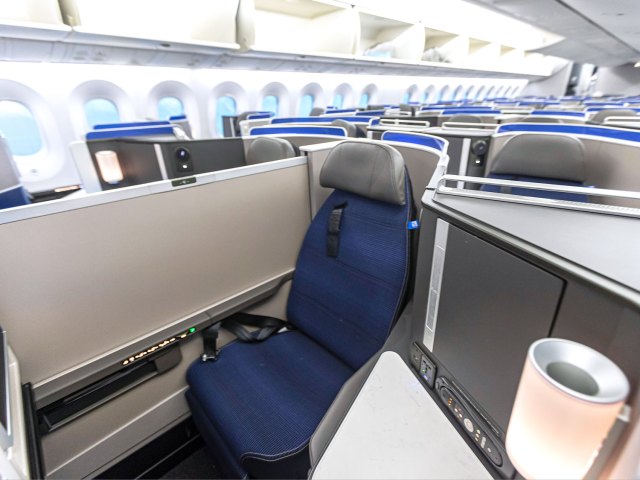
Now that we’ve covered short-haul flights, let’s talk about long-haul international flights. On these routes, as well as for a select number of longer premium domestic markets such as the New York-to-Los Angeles route, business class is, somewhat confusingly, a much better product than what you’ll find in first class when flying domestically in the United States.
Instead of recliner seats, you’ll find ones that convert into fully flat beds (often with privacy doors) along with lounge access and other premium perks. But it might not be called “business class”: On United, business class is named “Polaris,” while on Delta, it’s “Delta One.”
To make matters more confusing, Polaris, for example, is available on wide-body aircraft serving long-haul international destinations. But on narrow-body flights serving short-haul international destinations between the U.S. and Latin America, United sells business class instead. This is the same cabin that is usually sold as first class on domestic flights, found on aircraft such as the Boeing 737. American Airlines takes a similar approach.
Long-Haul First Class
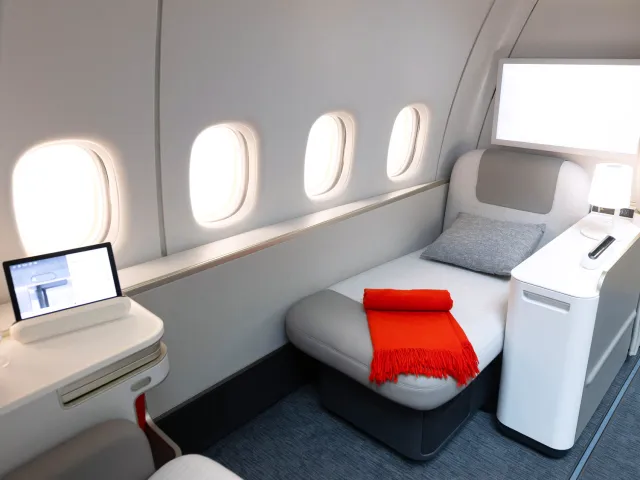
On some airlines’ long-haul planes, there’s a first class cabin in addition to business class. Even though it’s called first class, it’s very different from, say, first class on an American Boeing 737.
In a bid to woo business and premium travelers, the world’s top global airlines have invested millions of dollars in their first-class products. In early 2025, Air France introduced its overhauled “La Premiere” first-class cabin. If you can get past the sticker shock — expect to pay up to $10,000 for a one-way flight — you’ll find an intimate cabin with just four suites, seats that convert into generously sized beds, and even floor-to-ceiling curtains to guarantee privacy.
Before you even step on board, a dedicated agent will escort you through security to an exclusive first-class lounge with gourmet meals and spa treatments. In Paris, a private chauffeur will whisk you from the lounge directly to your plane, so you can skip the boarding line altogether. Once the plane takes off, you’ll be treated to gourmet multicourse meals designed by celebrity chefs and as much Champagne — or anything else you’d like — as you can drink.
Other international airlines — from Lufthansa in Germany to ANA and Japan Airlines in Japan, Singapore Airlines, and Emirates — offer similar or even more exclusive experiences. On these airlines, first class is a step above their business class offering and the highest level of service you can receive. And it’s the most expensive to book, often costing two to three times as much as business class on the same flight.
One part of the world where you generally won’t find long-haul first class is the United States. Neither Delta nor United offers a first-class cabin. The lone exception is American, but that won’t be the case for much longer — the airline has announced plans to phase out long-haul first class, which is only available on a handful of aircraft.
Instead, U.S. airlines have invested in making their business class — Polaris or Delta One, for example — better than ever before. While it’s fair to consider their products a hybrid of “true” first and traditional business class, the primary difference is that the cabins are often much larger. On some United planes, for example, there are 60 Polaris seats — compared with just four La Premiere seats on an Air France flight.
What About Premium Economy?
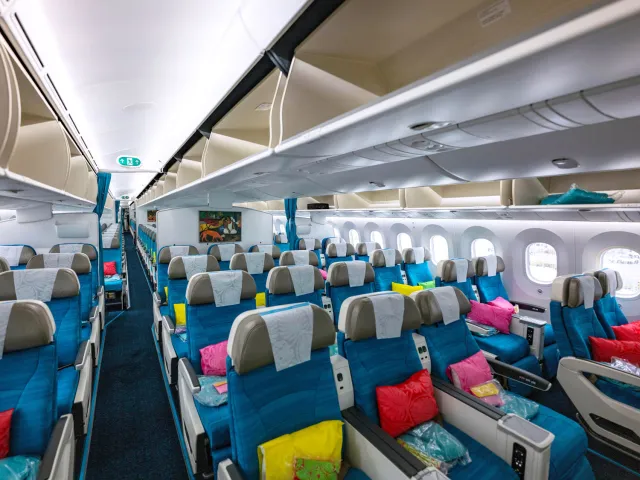
In 1992, Taiwan-based Eva Air was the first airline to introduce premium economy, and in recent years this new cabin has become increasingly popular. Remember the old business-class recliners in the 1970s and 1980s? As airlines upgraded their business-class products to flat-bed seats, it left a gap in the market for premium travelers who couldn’t quite justify splurging for a business-class ticket. Enter: premium economy.
Seats in premium economy are similar (and, in many cases, exactly the same) as those that U.S. airlines use for domestic first class. Essentially, they’re a few inches wider, recline a little more, and boast a few inches of extra legroom. Service levels fall somewhere between business class and economy class — with a smaller cabin, you’ll have more dedicated service and perhaps drinks in real glassware, but it won’t be quite to the same level as you’d find in business or first class.
More from our network
Daily Passport is part of Inbox Studio, which publishes content that uplifts, informs, and inspires.






